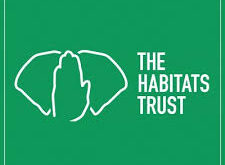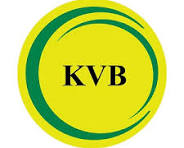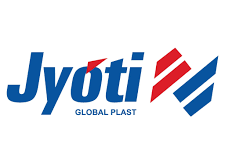BENGALURU, India – July 1, 2025
In today’s sprawling enterprise technology landscapes, what you don’t know can cost you – literally trillions. As organizations navigate an increasingly complex maze of on-premises systems, hybrid clouds, edge devices, and shadow IT, a critical visibility crisis has emerged.
The world’s enterprises are hemorrhaging value through inefficient asset utilization, security vulnerabilities, and operational inefficiencies, all stemming from a fundamental problem: incomplete understanding of their technology ecosystems. Enter Infraon Assets, whose unified asset discovery approach is reimagining how organizations map, manage, and monetize their IT investments.
The Astronomical Cost of Not Knowing
The numbers are staggering. According to recent analyses from McKinsey & Company and Gartner, global enterprises collectively waste over a trillion dollars annually due to poor visibility into their technology assets – a figure that continues to grow as IT environments become more distributed and complex.
“Most organizations can only account for about 45% of their technology assets with any real confidence,” explains Mr Deepak Gupta, Director of ITSM at EverestIMS Technologies. “The remaining 55% exists in a gray zone of uncertainty, creating enormous financial leakage and significant security exposure. With Infraon Assets, we’re directly addressing this trillion-dollar visibility gap that’s plaguing enterprise IT.”
This visibility crisis manifests in numerous ways: unused software licenses costing enterprises billions annually, over-provisioned cloud resources sitting idle, hardware assets that go untracked until they fail, and security teams unable to protect what they don’t know exists.
The Asset Discovery Challenge
The root of this massive problem lies in how enterprise technology environments have evolved – growing organically over decades, accelerated by cloud adoption, IoT proliferation, and the blurring lines between corporate and personal technology.
Traditional approaches to asset management have failed to keep pace with this evolution. Manual inventories quickly become outdated. Siloed discovery tools provide only partial visibility. And the dynamic nature of modern IT means that any static snapshot of the environment is obsolete almost immediately.
“The legacy approach to asset discovery is fundamentally broken,” says Gupta. “Organizations typically employ 6-10 different tools that each provide fragmented views of the environment -network scanning tools, endpoint management solutions, cloud management platforms, and more. None provides the comprehensive picture needed for truly effective management.”
Infraon Assets takes a radically different approach, implementing what the company calls “unified discovery” that combines multiple detection methodologies:
- Agent-based discovery for detailed endpoint information
- Agentless network scanning for comprehensive infrastructure visibility
- API integrations with cloud service providers
- CMDB synchronization to incorporate existing asset data
- Passive network monitoring to detect transient and IoT devices
- User-provided data through self-service portals
“The key innovation is how we synthesize these different discovery methods into a single, coherent view of the entire technology ecosystem,” explains Gupta. “We’re not just collecting data – we’re creating relationships, mapping dependencies, and building a dynamic model that evolves as the environment changes.”
From Inventory to Intelligence
What truly sets Infraon Assets apart is its transformation of raw asset data into actionable intelligence through what the company calls its “Golden Database” of IT infrastructure insights.
“Most asset management systems are glorified inventory lists,” Gupta notes. “They tell you what you have, but not what it means. Our approach converts that inventory into intelligence that drives business decisions.”
This intelligence manifests across several dimensions:
Financial Optimization – The platform provides unprecedented insights into technology spending, maintenance costs, and upgrade cycles. Organizations using Infraon Assets report average savings of 22% on technology expenses through elimination of redundant systems, reclamation of unused licenses, and optimization of cloud resources.
A major financial services firm recently discovered through Infraon’s unified asset view that they were maintaining support contracts for over 400 servers that had been decommissioned but never properly removed from their asset records—an annual waste of over $2.3 million.
Risk Mitigation – Security teams can’t protect what they don’t know exists. Infraon Assets’ comprehensive discovery capabilities have become a critical component of many organizations’ security programs by identifying shadow IT, unpatched systems, and unauthorized devices.
“In one recent implementation for a healthcare provider, we discovered over 300 devices that weren’t in their official inventory – including several critical systems with direct access to patient data,” Gupta shares. “Those blind spots represented significant compliance risks under HIPAA regulations.”
Operational Efficiency – By mapping relationships between assets and business services, Infraon Assets enables organizations to understand the operational impact of technology decisions.
“When planning maintenance windows or evaluating changes, organizations can now visualize exactly which business services will be affected,” explains Gupta. “This has reduced change-related incidents by an average of 43% among our customers.”
The Economics of Asset Visibility
The financial implications of comprehensive asset visibility extend far beyond direct cost savings. Organizations leveraging Infraon Assets’ unified discovery approach report significant improvements across multiple business dimensions:
- Procurement optimization: 18% average reduction in technology acquisition costs through elimination of unnecessary purchases and better vendor negotiations based on accurate usage data
- Audit preparation: 76% reduction in time and resources required for audit compliance through automated asset documentation
- Lifecycle management: 24% extension of average asset lifespan through better maintenance and upgrade planning
- Resource allocation: 31% improvement in resource utilization rates through identification of under-utilized assets
- Service delivery: 29% increase in first-call resolution rates for IT service desks through immediate access to accurate configuration data
“When we look at the cumulative impact across all these dimensions, the ROI is extraordinary,” says Gupta. “We’re seeing payback periods of less than six months for most implementations, with ongoing benefits that compound over time.”
Technology Ecosystem Mapping: The New Frontier
As Infraon Assets continues to evolve its platform, the company is pioneering what it calls “technology ecosystem mapping” – a holistic approach that goes beyond traditional asset management to create a comprehensive visualization of the entire technology landscape.
“We’re moving beyond just tracking individual assets to understanding the complex web of relationships between technology components, business services, user experiences, and organizational outcomes,” explains Gupta.
This ecosystem mapping capability enables organizations to:
- Visualize how technology components interconnect and support business processes
- Trace the impact of infrastructure changes on application performance and user experience
- Model the ripple effects of technology decisions before implementation
- Identify single points of failure and architectural vulnerabilities
- Align technology investments with business priorities based on actual usage and impact
“It’s about connecting the dots across the entire technology footprint,” says Gupta. “When you can see not just what exists, but how everything interrelates, you unlock entirely new possibilities for optimization and innovation.”
The Human Element: Beyond Technology
While technology is at the core of Infraon Assets’ offering, the company recognizes that effective asset management is ultimately about people and processes. The platform includes robust capabilities for managing the human aspects of technology ecosystems:
- Ownership tracking that associates assets with responsible individuals or teams
- Role-based access controls that ensure appropriate visibility while maintaining security
- Approval workflows for changes and lifecycle transitions
- Self-service portals that empower users to provide and maintain accurate information
“Technology doesn’t exist in a vacuum – it’s acquired, configured, used, and eventually retired by people,” Gupta observes. “Our approach acknowledges this reality by incorporating the human element into every aspect of asset management.”
This human-centric approach extends to the platform’s user experience, which emphasizes intuitive visualization and contextual information rather than overwhelming users with technical details.
“We’ve designed the system to provide the right information to the right people at the right time,” says Gupta. “A CIO needs different insights than a security analyst or a service desk technician, and the platform adapts accordingly.”
Looking Forward: The Future of Asset Intelligence
As organizations continue their digital transformation journeys, comprehensive visibility into technology assets will become even more critical. Infraon Assets is already working on next-generation capabilities that will further expand the boundaries of what’s possible:
Predictive analytics that forecast future asset needs based on historical patterns and business projections
AI-powered anomaly detection that identifies unusual patterns in asset usage or performance
Automated compliance monitoring that continuously verifies adherence to regulatory requirements
Circular economy optimization that maximizes asset value throughout the entire lifecycle, including responsible disposition.
“The future of asset management isn’t just about knowing what you have – it’s about leveraging that knowledge to drive better business outcomes,” concludes Gupta. “As technology environments continue to grow in complexity, the value of comprehensive visibility will only increase. Organizations that achieve this visibility will have a significant competitive advantage in terms of agility, efficiency, and innovation capacity.”
In a world where technology is increasingly the primary driver of business value, Infraon Assets is on a mission to ensure that organizations can see, understand, and optimize every aspect of their technology investments – closing the trillion-dollar visibility gap and transforming IT asset management from a necessary administrative function into a strategic business enabler.
 Newspatrolling.com News cum Content Syndication Portal Online
Newspatrolling.com News cum Content Syndication Portal Online







